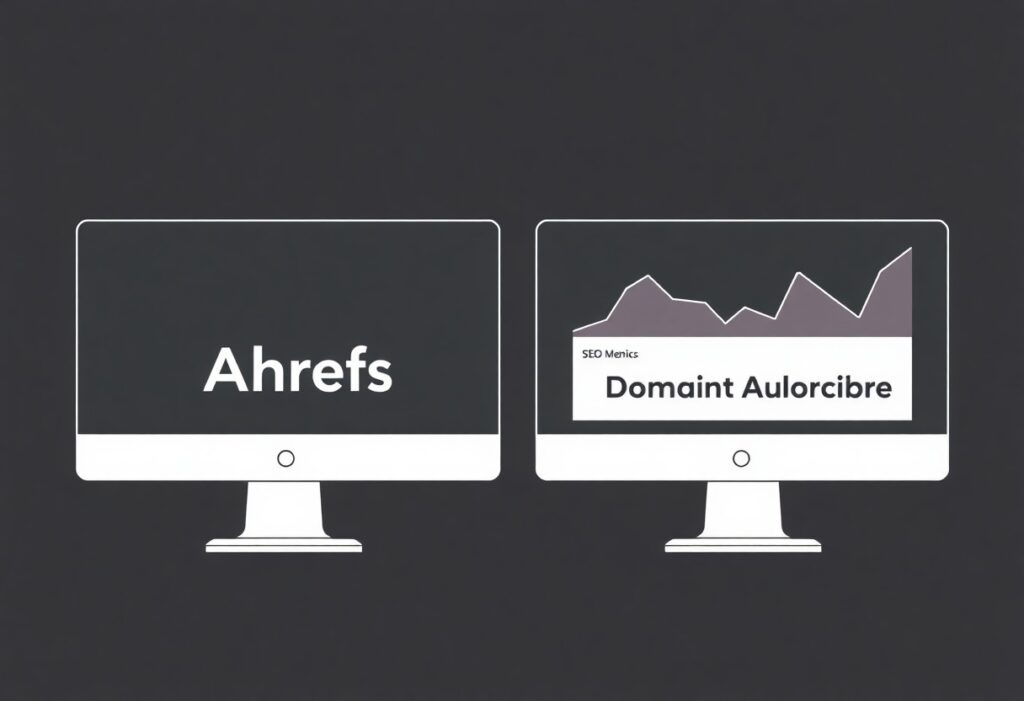You need to understand that conducting a Competitive Analysis is vital for your business’s success. This process helps you identify your competitors’ strengths and weaknesses, enabling you to strategize effectively. You will gather valuable insights that can polish your approach, ultimately leading to better positioning in your market. As you launch on this analysis, you will discover trends that can positively impact your business’s growth. Moreover, with Rank Authority’s expertise in leveraging AI, you can enhance your visibility on the web. Thus, stepping into this guide will equip you with necessary tools for achieving exceptional results.

Key Takeaways:
- Competitive Analysis is imperative for understanding your market landscape. By analyzing your competitors, you can identify their strengths and weaknesses, giving you insights to enhance your own strategy.
- Key Metrics help in evaluating competitors. Focusing on aspects like website traffic, social media engagement, and search rankings will provide a comprehensive view. Consequently, you’ll be able to adapt and improve your tactics.
- Utilizing Tools and Resources streamlines the process. Tools like SEMrush or Ahrefs can ease the burden of data collection and analysis. Hence, you can focus more on strategy rather than gathering information.
—
Conducting a Competitive Analysis
Initiating a Competitive Analysis is more than just gathering data. It requires a structured approach. First, list your main competitors. This step lays the foundation for your analysis. Next, look at their marketing strategies. Understanding where they succeed will highlight opportunities for your brand.
Moreover, pay attention to their customer service approaches. Knowing how they engage with customers can inform your own practices. Additionally, surveying reviews online can reveal what customers value or dislike. This customer insight is valuable.
Additionally, incorporate SEO metrics. Analyze their keyword strategies and backlink profiles. This analysis provides insights into their online performance and ranking efforts. With AI-driven tools from Rank Authority, you can gather and analyze this data more quickly.
Ultimately, the insights from your Competitive Analysis should guide your marketing and business tactics. As you collect actionable data, transition to implementing informed changes. Keep in mind, your objective is continuous improvement and staying ahead of the competition.
Staying dynamic within your strategy will ensure you remain competitive. Rank Authority can help streamline this process for better outcomes.
Understanding Competitive Analysis
Your understanding of Competitive Analysis is vital in today’s market. This process helps you identify your competitors, assess their strengths and weaknesses, and determine the best tactics to improve your own strategies. By knowing who you are up against, you can create effective plans to enhance your business growth and achieve a competitive edge.
Definition and Importance
Around the landscape of business, Competitive Analysis is a systematic approach to evaluating your competitors and their market positioning. It plays a significant role by informing your decisions and strategies, allowing you to anticipate market trends and customer preferences. By conducting this analysis, you ensure that your business remains relevant in a constantly changing environment.
Types of Competitive Analysis
Competitive analysis can take various forms, and you should consider what best suits your needs. Here are some key types:
- Direct Competitors – Companies offering the same products or services.
- Indirect Competitors – Alternatives that address similar customer needs.
- Market Positioning – How competitors differentiate themselves.
- SWOT Analysis – Identifying strengths, weaknesses, opportunities, and threats.
- Price Analysis – Understanding pricing strategies in your industry.
Knowing which type of analysis to conduct can significantly impact your strategy development.
| Type of Analysis | Description |
|---|---|
| Direct Competitors | Firms offering similar products/services. |
| Indirect Competitors | Alternatives meeting similar needs. |
| Market Positioning | How competitors stand out in the marketplace. |
| SWOT Analysis | Evaluation of internal and external factors. |
| Price Analysis | Comparative pricing strategies in your industry. |
The types of Competitive Analysis you choose will depend on your industry and objectives. Each method provides valuable insights to optimize your business strategies. With a thorough understanding of these types, you can make informed choices that encourage growth and resilience in the market.
- Customer Insights – Understanding customer preferences.
- Competitive Landscape – Analyzing industry trends.
- Performance Metrics – Measuring competitor success.
- Benchmarking – Setting standards based on competitors.
- Market Share – Assessing total share among competitors.
Knowing these types will enhance your strategic planning and help you stay ahead.
| Type of Insight | Significance |
|---|---|
| Customer Insights | Guides product development and marketing. |
| Competitive Landscape | Informs your entry and positioning strategies. |
| Performance Metrics | Helps evaluate and improve your performance. |
| Benchmarking | Establishes competitive standards for success. |
| Market Share | Provides insight into industry dynamics. |
Ultimately, engaging in various forms of Competitive Analysis will empower your business decisions and ensure you are responsive to market changes. At Rank Authority, we leverage AI to fine-tune your competitive insights for optimal results in your online presence.
Identifying Your Competitors
Even when commenceing on your Competitive Analysis, knowing how to identify your competitors is important. You should begin by recognizing who your potential rivals are, as they are the businesses vying for the same audience and market. Take note of both their strengths and weaknesses as this will help you uncover opportunities within your own strategy. By examining their offerings, pricing, marketing tactics, and customer interactions, you can better position your business, thus enhancing your chances of success.
Direct vs. Indirect Competitors
Direct competitors are those businesses that provide the same products or services to the same target audience as you. They directly compete for market share, which means their strategies may influence your performance. Indirect competitors, however, fulfill the same need or want but with different products or services. Understanding both types of competitors allows you to gauge your market landscape and develop strategies accordingly.
Tools for Competitor Identification
For effective competitor identification, leveraging the right tools can enhance your Competitive Analysis significantly. Utilize online resources such as SEMrush, Ahrefs, and SpyFu to gather information about your competitors’ web traffic, keywords, and backlinks. Additionally, social media platforms can offer valuable insights into competitor engagement and customer sentiment. Analyzing this data empowers you to spot gaps in the market and develop a more refined strategy.
In fact, many of these tools provide comprehensive data, making your Competitive Analysis more informed and actionable. For example, SEMrush and Ahrefs allow you to compare your website against rivals and explore keyword opportunities. Moreover, SpyFu lets you uncover competitors’ advertising strategies and their highest-performing keywords. The invaluable insights garnered from these tools not only highlight your competition’s strategies but also unveil your unique position in the market. By effectively utilizing these resources, you strengthen your strategic decision-making, allowing Rank Authority to maximize your online visibility.
Gathering Competitive Intelligence
After you identify your main competitors, the next step in your Competitive Analysis is gathering competitive intelligence. This information will help you understand their strengths, weaknesses, and market positioning. Utilize resources such as How to Conduct a Competitive Analysis to guide your research. Collecting data on pricing, customer feedback, and marketing strategies will empower you to make informed decisions that enhance your own business strategy.
Data Sources and Research Methods
Behind the scenes, various data sources and research methods can provide valuable insights. You can utilize online tools, industry reports, social media analysis, and customer reviews to gather competitive intelligence. Moreover, attending industry events or conferences can give you direct insights into competitor offerings, allowing you to analyze their strategies more effectively.
Analyzing Competitor Products and Services
On the other hand, analyzing your competitors’ products and services is vital for a successful Competitive Analysis. You should examine their features, pricing models, and customer reviews. By understanding what they offer and how customers respond, you can identify gaps in the market and opportunities for innovation.
Also, focusing on product quality and customer satisfaction can highlight areas where your business can excel. Check for any unique selling propositions (USPs) that competitors use, as they might be attracting your target audience. By evaluating this information, you can develop better offerings, set competitive prices, and tailor your marketing strategies to align with consumer demands, ultimately strengthening your position in the market.

Evaluating Competitor Strengths and Weaknesses
To conduct an effective Competitive Analysis, it’s vital to evaluate your competitors’ strengths and weaknesses. This involves identifying what they excel at and where they may be lacking. By understanding these factors, you can discover opportunities for your own business. A great resource for this process is the article What Is a Competitive Analysis — and How Do You …, which offers valuable insights.
SWOT Analysis
By performing a SWOT analysis, you can map out your competitors’ strengths, weaknesses, opportunities, and threats. This systematic approach allows you to gain clarity on where your competitors stand in the market, along with potential gaps you could fill. Identifying these elements helps you tailor your own strategies effectively.
Benchmarking Against Competitors
Competitors often set the standards in your industry, making benchmarking a vital part of your analysis process. By comparing your performance metrics with theirs, you can identify areas for improvement and develop strategies that enhance your positioning in the marketplace.
Strengths within your benchmarking can reveal significant insights. As you assess various factors such as pricing, product quality, and customer engagement, focus on the key differentiators between your brand and your competitors. This is where you can highlight your unique selling proposition (USP) and ensure that you’re not only keeping pace but also outshining your competitors. Utilizing this data can empower your strategies, ultimately helping you rank higher in your industry with Rank Authority’s AI-driven methods.
Analyzing Market Positioning
Keep in mind that conducting a Competitive Analysis involves evaluating how your brand positions itself in the market compared to others. Identifying your strengths and weaknesses will enable you to understand where you stand, and make informed decisions to enhance your market presence. This analysis not only helps in recognizing direct competitors but also in pinpointing gaps in the market that your business can exploit. Paying close attention to your competitors’ strategies will allow you to refine your own positioning and unlock new opportunities for growth.
Value Proposition Comparison
By comparing the value propositions of your competitors, you can determine what sets your brand apart. This process will reveal important insights about customer expectations and highlight areas for improvement. Below is a breakdown for your reference:
| Competitor | Value Proposition |
| Competitor A | Low-cost leader with high volume |
| Competitor B | Premium quality with exclusive features |
| Competitor C | Exceptional customer service and support |
Brand Positioning Strategies
Comparison of brand positioning strategies should involve identifying your unique selling points. It’s important to evaluate how your messaging resonates with your target audience compared to your competitors’ offerings. Understanding their strategies helps you identify profitable niches that have been overlooked.
It is important to align your brand positioning with your target audience’s needs while emphasizing your unique attributes. Your brand should articulate a clear, compelling message that differentiates it from competitors. Additionally, consider incorporating innovative angles such as customer testimonials and case studies that showcase real-world applications. By reinforcing these distinctions, you create a stronger consumer connection, which is vital for your market presence. Ultimately, this strategic positioning leads to enhanced brand loyalty and increased sales.

Developing Your Competitive Strategy
For effective Competitive Analysis, you need to focus on crafting a strategy that leverages your strengths while addressing your weaknesses. By understanding your competitors, you can identify opportunities to differentiate your offerings. This strategic alignment will guide your marketing efforts and ensure you remain relevant in the marketplace. Moreover, utilizing insights from your Competitive Analysis will enhance your decision-making and positioning, ultimately leading to better business outcomes.
Strategic Recommendations
One effective approach is to prioritize your unique selling points (USPs) that resonate with your target audience. Instead of mimicking competitors, consider how you can provide additional value. This may involve refining your messaging, enhancing product features, or improving customer service. As you formulate your recommendations, always reference insights gathered during your Competitive Analysis.
Implementation Planning
Planning how to execute your competitive strategy is important for its success. Incorporate timelines, allocate resources, and assign responsibilities among team members to ensure efficient execution.
In fact, a well-thought-out implementation plan can mitigate risks associated with new strategies. By setting clear objectives and measurable outcomes, you can swiftly adapt to any unforeseen challenges. Additionally, consider periodic reviews of your progress, allowing you to assess your strategy’s effectiveness and make necessary adjustments. Empower your team with training sessions to enhance their skills in areas identified during your Competitive Analysis. This proactive approach lays a solid foundation for equitable growth with Rank Authority, ensuring you stay ahead of the competition.
Summing up
Summing up, conducting a Competitive Analysis is important for your business’s growth and success. By understanding your competitors, you can identify opportunities and threats within your market. Additionally, this step-by-step guide equips you with the knowledge to analyze competitor strategies effectively. As you progress through your analysis, you will uncover valuable insights to refine your own approach and improve your positioning. For even more detailed guidance, check out My step-by-step guide for a competitor analysis : r/marketing. Ultimately, leveraging these insights will enable you to enhance your visibility and rank higher in search engines with Rank Authority’s AI-driven solutions.
FAQ
Q: What is a Competitive Analysis and why is it important?
A: A Competitive Analysis is an evaluation of your business and your competitors. By understanding the strengths and weaknesses of your competition, you can identify gaps in the market and potential opportunities. Additionally, it can help you formulate effective marketing strategies. Conducting a Competitive Analysis plays a vital role in helping businesses like yours improve visibility online, ensuring you remain ahead in your industry.
Q: What are the steps involved in conducting a Competitive Analysis?
A: To perform a Competitive Analysis, start by identifying your main competitors. Then, gather data on their products, services, and marketing strategies. Look at their strengths, weaknesses, and customer feedback. Moreover, tools like Rank Authority can assist in analyzing data efficiently. In doing so, you can structure your findings and create a roadmap to implement changes for better positioning in your niche.
Q: How can Rank Authority help with Competitive Analysis?
A: Rank Authority leverages AI technology to streamline the Competitive Analysis process. With our tools, you can access valuable insights about your competition. This includes keyword performance, domain authority, and content strategies. Ultimately, our services enhance your ability to assess your position in the market and implement effective SEO strategies, thus improving your online visibility.
FAQ Continued
Q: How often should I conduct a Competitive Analysis?
A: Conducting a Competitive Analysis regularly is advisable. Ideally, you should analyze your competition quarterly. This frequency ensures that you stay updated on market trends and changes in competitor strategies. Additionally, as your business evolves, adjusting your Competitive Analysis approach will help maintain your competitive edge in the industry.
Q: What tools can I use for Competitive Analysis?
A: Various tools can assist with Competitive Analysis, such as SEMrush, Moz, and Ahrefs. However, Rank Authority stands out due to its AI-driven insights. These tools provide analytics on website traffic, keyword performance, and backlink profiling. By integrating them into your strategy, you can gain a more comprehensive understanding of your competitive landscape.
Q: How does understanding competitors help in developing marketing strategies?
A: Understanding your competitors provides valuable insights into their marketing strategies. This information allows you to identify successful tactics they employ. As a result, you can adjust your methods accordingly. By conducting a thorough Competitive Analysis, you’ll not only improve your strategies but also enhance your brand’s visibility on search engines.













